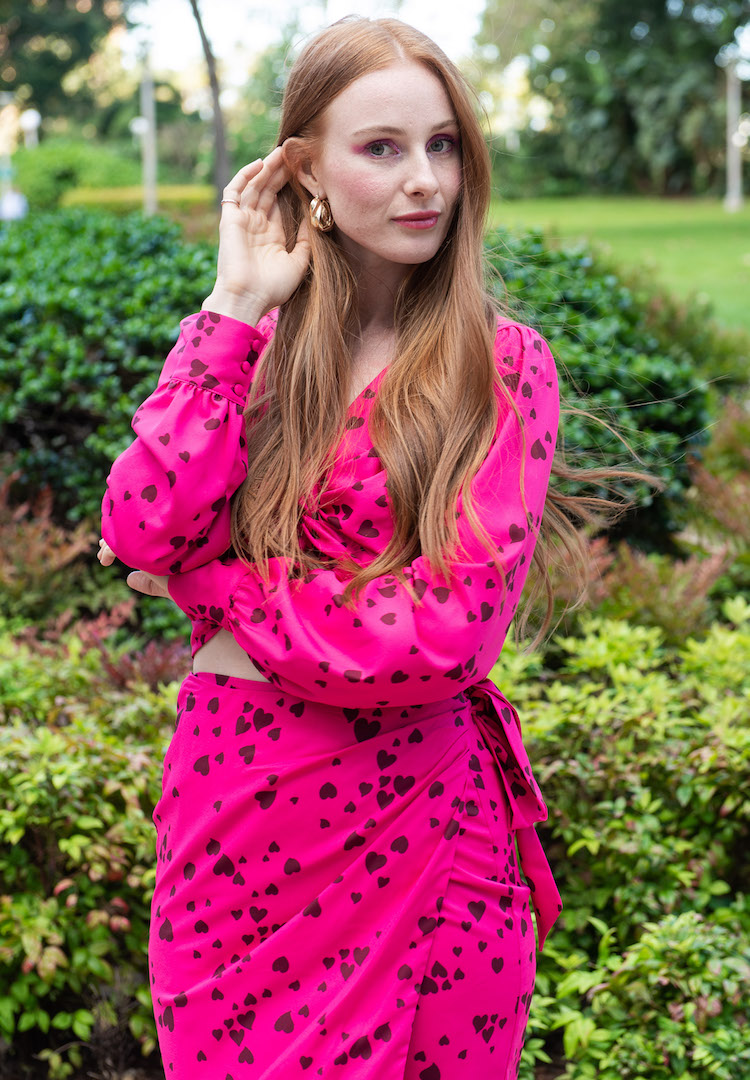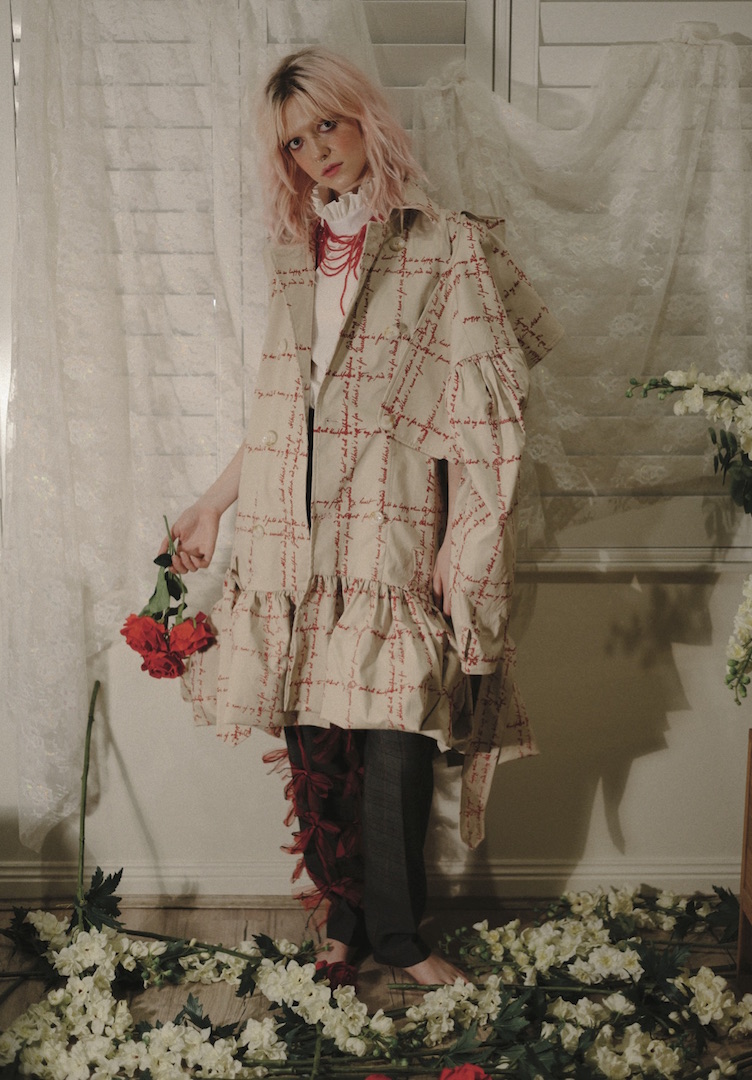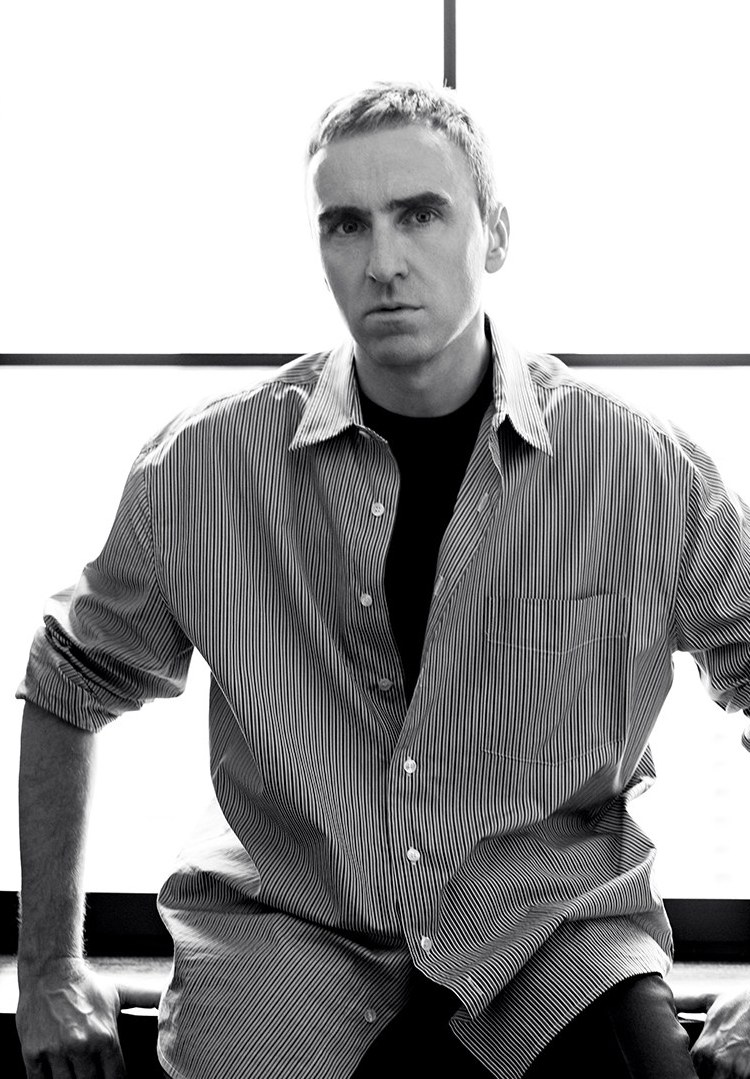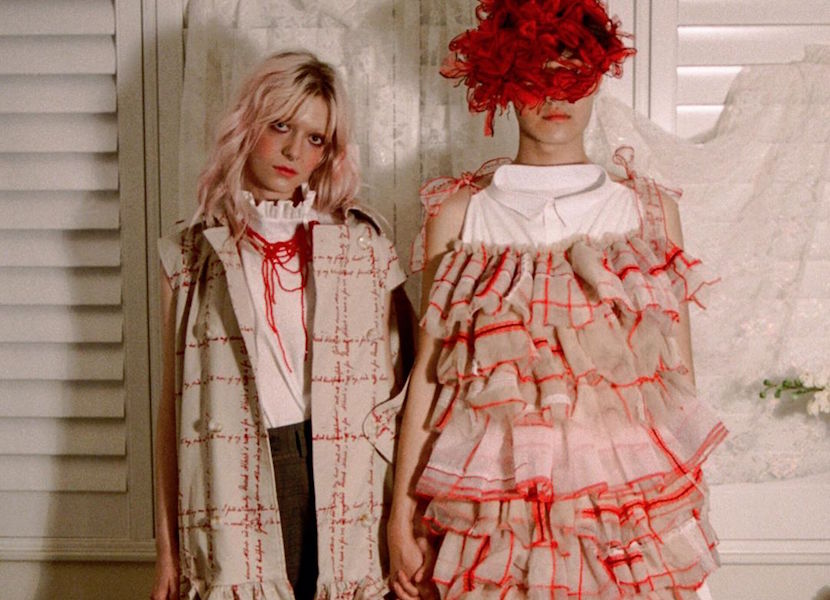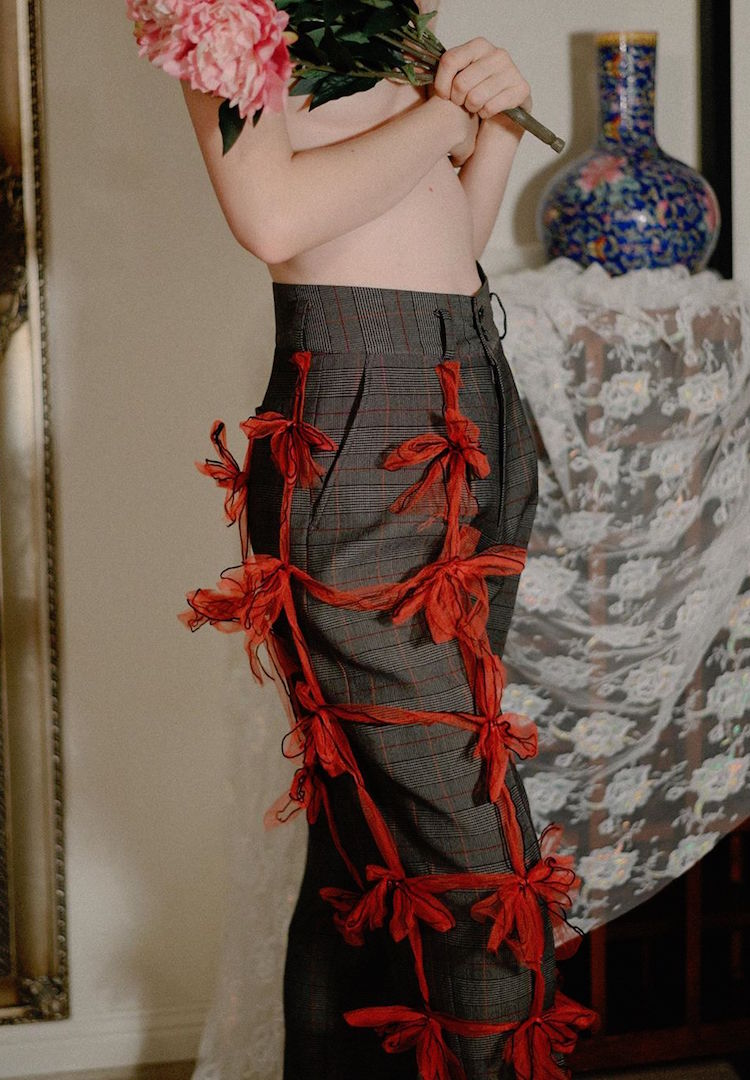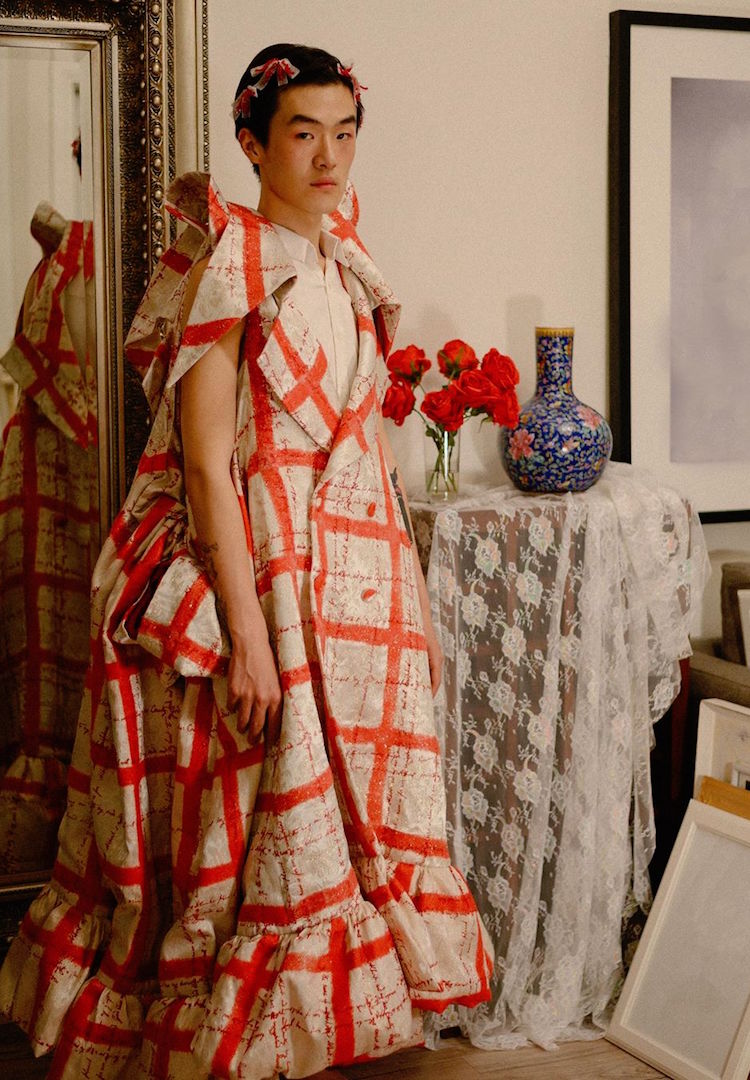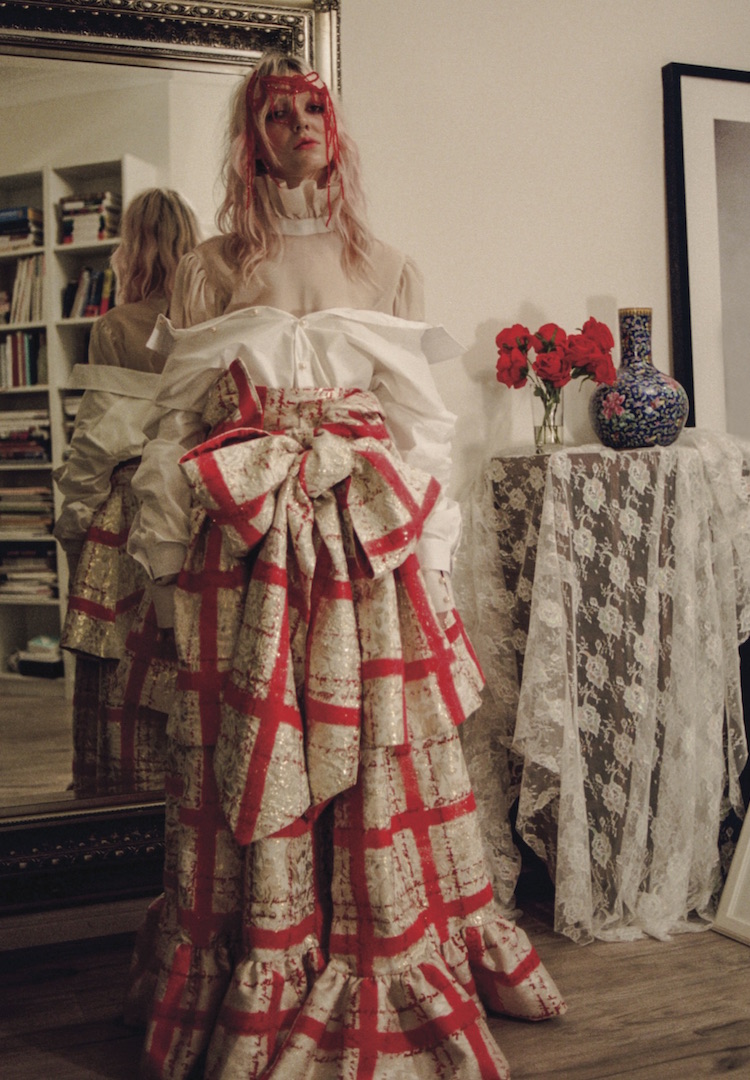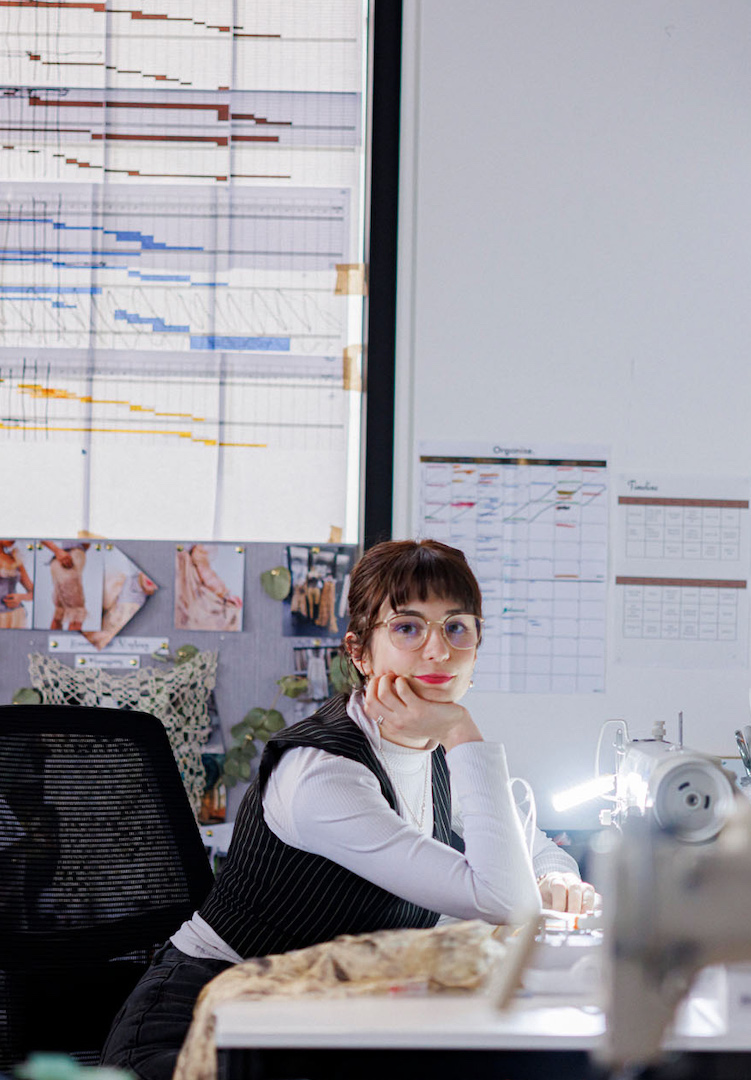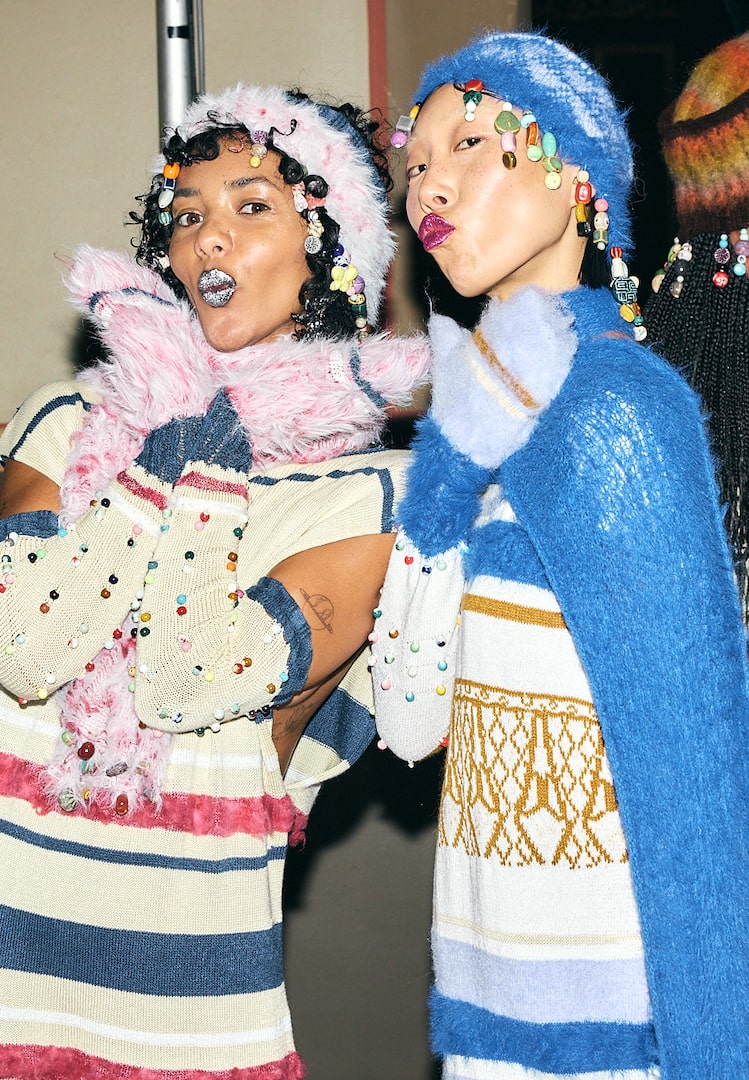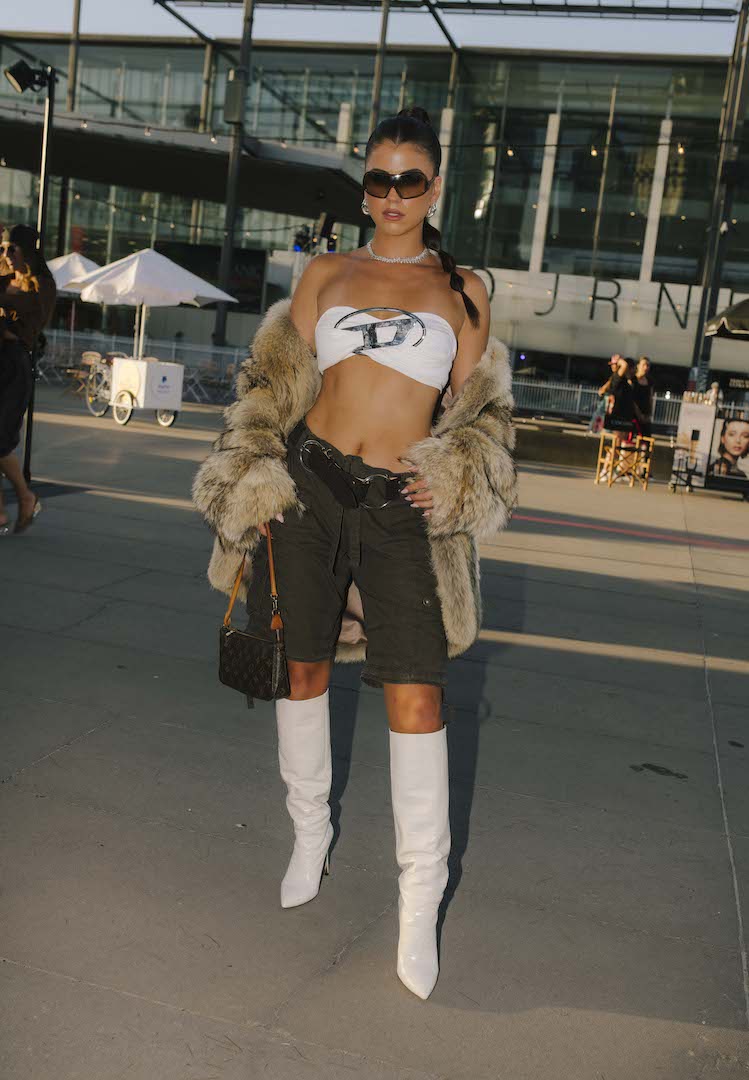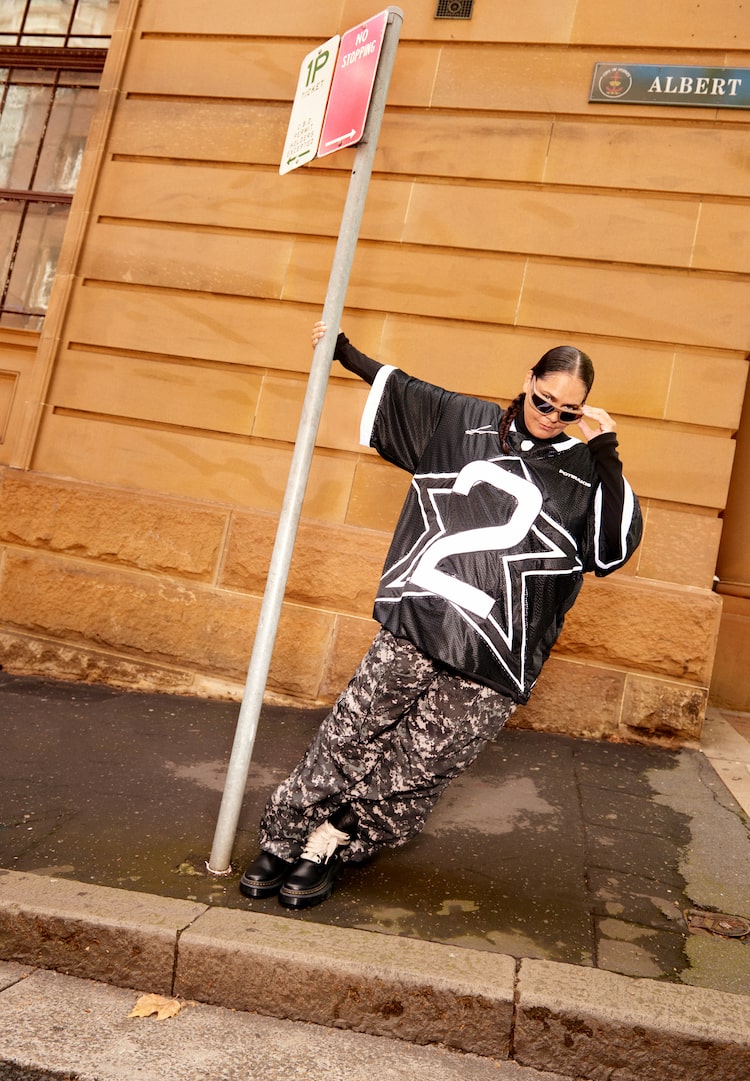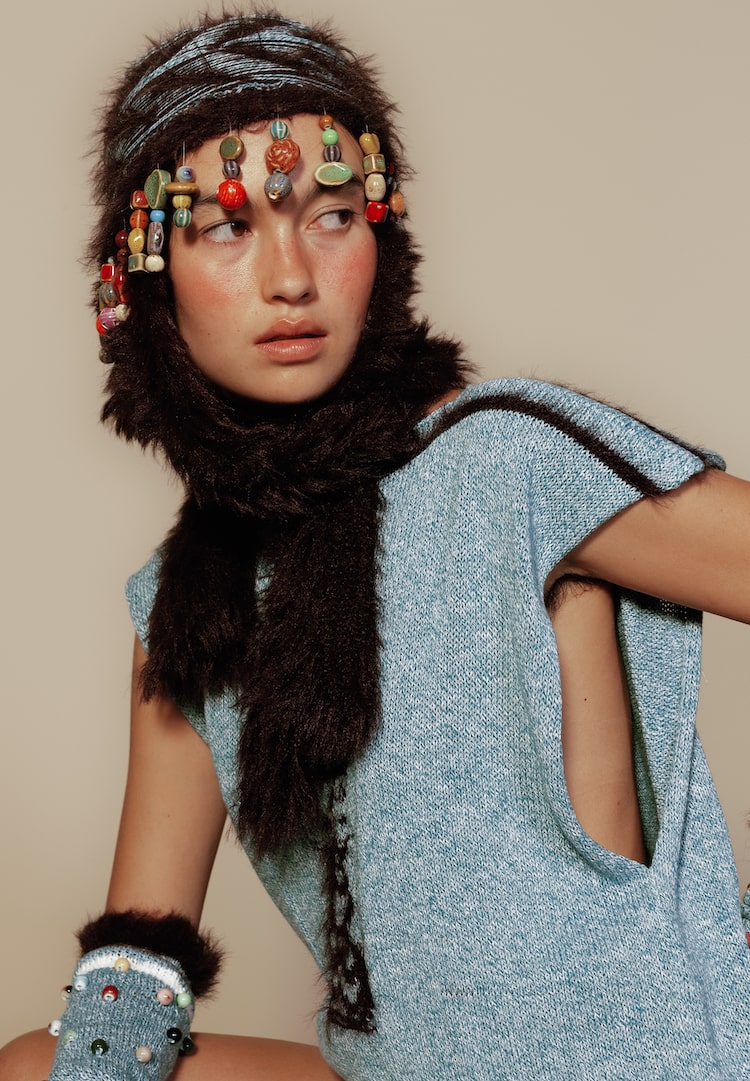Rene Nguyen’s graduate collection is printed with excerpts from Queen Victoria’s love letters
From England, with love.
Once again, Fashion Journal is the supporting partner of Virgin Australia Melbourne Fashion Festival’s National Graduate Showcase.
The 12 finalists for 2020 have been announced, and they’ve given us an insight into the process behind the collections they’ll be showing.
Next up: Rene Nguyen and her graduate collection Signed, V.
Please introduce yourself to our readers.
My name is Rene Nguyen, my brand is RE:NE, and I am an emerging fashion designer based in Sydney. I recently graduated with an Honours degree from the University of Technology, Sydney.
Tell us about your collection.
Signed, V is a womenswear collection inspired by the love story between Queen Victoria and her husband, Prince Albert. This collection explores the traditional notion of one’s gendered dress through these two historical figures to provoke preconceptions of femininity and masculinity.
When did you know you wanted to get into fashion design?
I first encountered fashion design during visits to my aunt’s house in Vietnam. My family were tailors and masters of their craft. While my cousin was learning the craft, she had a hobby of recycling fabric scraps to make clothes for her Barbie dolls, and I would often get to help with the process. My interest grew further when I was introduced to the flamboyant fashion and genderless aesthetics of Japanese Visual Kei bands. Then, during my senior years of high school, I was confident I would concentrate my future within fashion design.
How do you describe your design style?
Sweet, hyper-feminine silhouettes with soft tactile textiles, and an underlying soft masculinity achieved by incorporating the craftsmanship of tailoring.
What were the major points of inspiration for your graduate collection?
Redefining the modern dictation of one’s gendered dress. I wanted to illustrate this combination of hyper-femininity and soft masculinity through Queen Victoria and Prince Albert’s love story. I borrowed aspects of their wardrobes and love letters as inspiration for the silhouettes and textiles in my collection.
Why did you choose Queen Victoria and Prince Albert as your examples of traditional gender roles?
I wanted to portray my idea using people that are well-known so there was a sense of familiarity. Queen Victoria represented the ideal woman of her time, feminine and devoted to her husband, while Prince Albert represented the ideal man, representing masculinity in his frock coat. They held the highest ranks and were the ultimate models of the Victorian Era. I reimagined the couple so their wardrobes would hybridise, creating a symbol of their love – oozing with her very feminine silhouettes but juxtaposed with the masculinity of his tailored suits.
What does the use of printed handwriting contribute to the collection?
The red handwriting was my replication of Queen Victoria’s diary entries and love letters to Prince Albert. Although the handwriting is cursive and soft, red is strong, bold and the colour of love. I screen-printed the handwriting throughout my collection to tie aspects of femininity and masculinity together. I used it as a platform for storytelling and also as a homage to their love.
Tell us about the experience of putting together your graduate collection.
As cliché as it sounds, putting together my graduate collection was like self-discovering. It put me in a position where I really had to think about my design aesthetics, my strong points and weaknesses, and what I want to express through my work. It was tough but very worth it in the end.
What part does sustainability play in your design practice?
Creativity merges with sustainability throughout my design to enable new ideas with minimal waste. Textiles are a large part of my design, and I approach them by experimenting with and manipulating my chosen material to upcycle the fabrication. Clothing can be timeless, and that has a great influence on the way I design. By incorporating the idea of upcycling fabrics and borrowing historical silhouettes, it has allowed me to take an approach where I can encourage non-conformity to trends and create less waste within the industry.
What’s next for you?
My next step is to travel. I would like to gain more experience in the international textiles’ field.
Find more of Rene’s work here.

